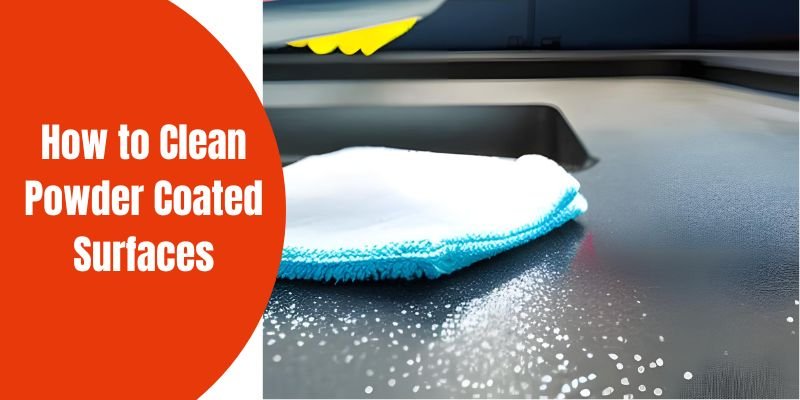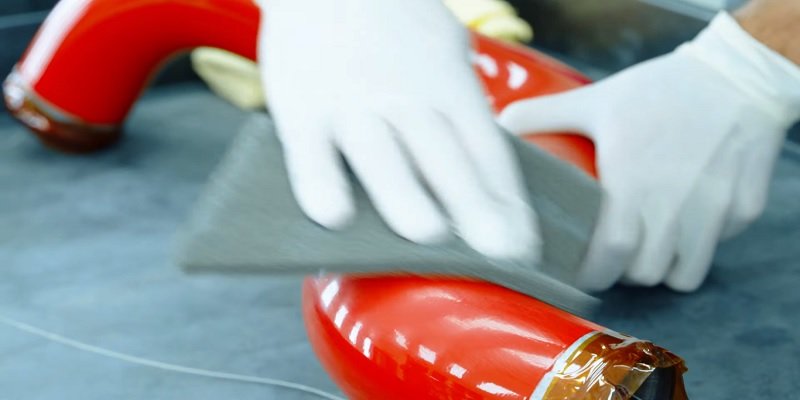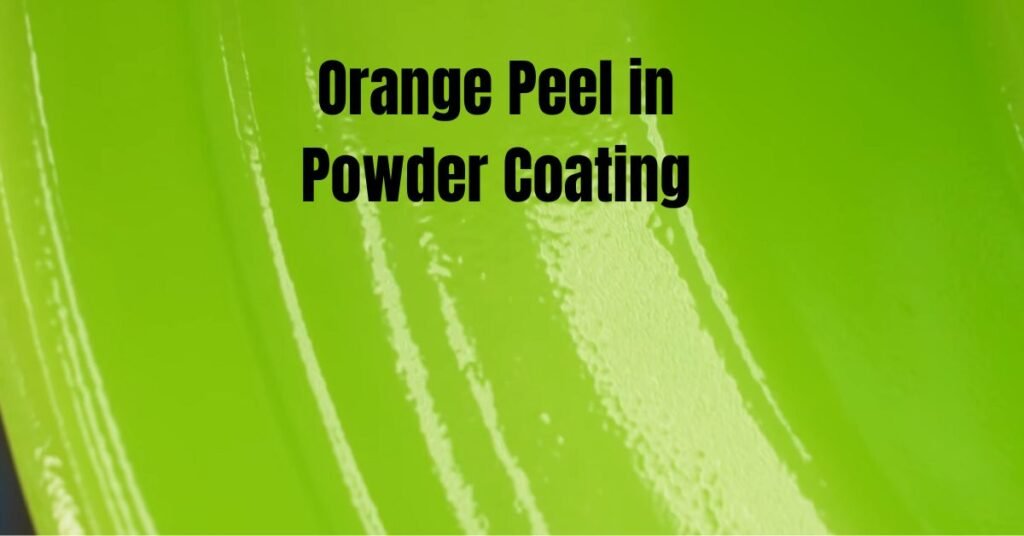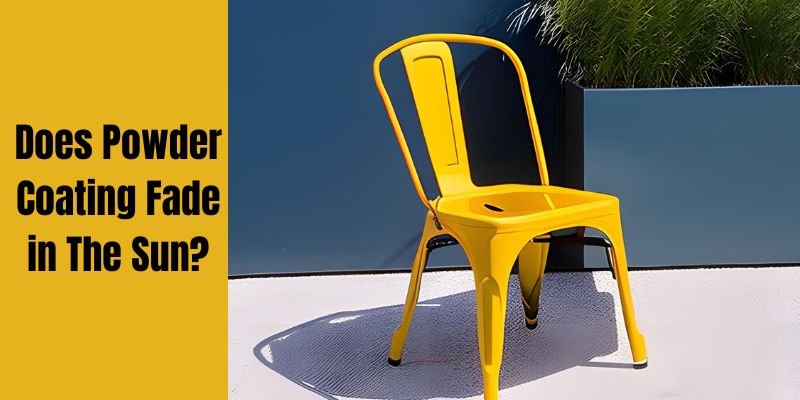Powder coating is a popular finishing technique used in various industries due to its durability and resistance to wear and tear.
Types of Powder Coated Surfaces
Here are the most common types of powder coated surfaces:
Metal Surfaces
Metal surfaces are the most commonly powder coated surfaces. They include aluminum, steel, and iron. Powder coating is used on metal surfaces to protect them from rust, corrosion, and other forms of damage. Powder coating also enhances the appearance of the metal surface by providing a smooth and consistent finish.
Read Also: How to clean powder coated metal
Wood Surfaces
Powder coating can also be used on wood surfaces. Wood surfaces are first treated with a special coating to create a surface that can be powder coated. Powder coating wood surfaces provides a durable finish that is resistant to scratches, chips, and fading. It also enhances the appearance of the wood surface.
Plastic Surfaces
Powder coating can also be applied to plastic surfaces. However, not all types of plastic can be powder coated. Only certain types of plastic, such as nylon and polyethylene, can be powder coated. Powder coating plastic surfaces provides a durable finish that is resistant to scratches, chips, and fading. It also enhances the appearance of the plastic surface.
Glass Surfaces
Powder coating can also be used on glass surfaces. Glass surfaces are first treated with a special coating to create a surface that can be powder coated. Powder coating glass surfaces provides a durable finish that is resistant to scratches, chips, and fading. It also enhances the appearance of the glass surface.
Powder coating is a versatile finishing technique that can be used on various surfaces, including metal, wood, plastic, and glass. Each type of surface has its own unique characteristics and requires specific preparation before powder coating.
How to Clean Powder Coated Surfaces

Cleaning powder coated surfaces is a straightforward process that requires a few basic tools and cleaning agents. By following the steps, you can ensure that your powder coated surfaces remain in excellent condition for years to come.
Basic Cleaning Procedure
Gather Necessary Supplies
Before starting the cleaning process, we need to gather the necessary supplies. Here are the supplies that we need:
- Soft-bristled brush
- Microfiber cloth
- Mild detergent
- Warm water
- Bucket
Cleaning Process

Follow these steps to clean a powder coated surface:
- Remove any loose debris or dirt from the surface using a soft-bristled brush.
- Mix a small amount of mild detergent with warm water in a bucket.
- Dip a microfiber cloth in the solution and wring it out to remove excess water.
- Gently wipe the surface with the damp cloth. Avoid using abrasive materials or harsh chemicals that can damage the powder coating.
- Rinse the surface thoroughly with clean water to remove any soap residue.
- Dry the surface with a clean microfiber cloth.
It is important to note that we should not use high-pressure water or steam cleaners to clean powder coated surfaces. These methods can damage the coating and cause it to peel or crack. Additionally, we should avoid using abrasive materials like steel wool or scouring pads, as they can scratch the surface and remove the coating.
By following these basic cleaning procedures, we can keep powder coated surfaces looking clean and new for years to come.
Deep Cleaning Techniques
Choosing the Right Cleaner
When it comes to deep cleaning powder coated surfaces, it is important to choose the right cleaner to avoid damaging the coating. We recommend using a non-abrasive, pH-neutral cleaner that is specifically designed for powder coated surfaces. Avoid using harsh chemicals such as bleach or ammonia, as they can cause discoloration and damage to the coating.
Before applying any cleaner, test it on a small, inconspicuous area of the surface to ensure that it does not cause any damage or discoloration. Once you have determined that the cleaner is safe to use, you can move on to the deep cleaning process.
Deep Cleaning Process
To deep clean powder coated surfaces, follow these steps:
- Remove any loose dirt or debris from the surface using a soft-bristled brush or a dry cloth.
- Apply the cleaner to the surface, following the manufacturer’s instructions. Use a soft-bristled brush or a sponge to gently scrub the surface, paying extra attention to any areas with stubborn stains or grime.
- Rinse the surface thoroughly with clean water to remove any remaining cleaner. Use a hose or a bucket of water and a clean sponge or cloth to rinse the surface.
- Dry the surface with a clean, dry cloth or allow it to air dry.
For tough stains or grime, you may need to repeat the deep cleaning process or use a stronger cleaner. However, be careful not to use anything too harsh that could damage the coating.
In conclusion, deep cleaning powder coated surfaces requires the right cleaner and a gentle touch. With the proper cleaning techniques, you can keep your powder coated surfaces looking clean and new for years to come.
Preventing Damage to Powder Coated Surfaces
Proper Handling
When it comes to powder coated surfaces, it is important to handle them with care to prevent any damage. Here are some tips on proper handling:
- Use gloves when handling powder coated surfaces to avoid leaving fingerprints or oils on the surface.
- Avoid dragging or sliding objects across the surface as it can scratch or damage the coating.
- Do not use sharp or abrasive tools to remove dirt or debris as it can scratch or damage the surface.
- When moving powder coated items, use protective packaging or materials to prevent scratches or dents.
Regular Maintenance
Regular maintenance is key to preventing damage to powder coated surfaces. Here are some tips on maintenance:
- Clean powder coated surfaces regularly with mild soap and water to remove dirt and debris.
- Avoid using harsh chemicals or cleaning agents as they can damage the surface.
- Dry the surface thoroughly after cleaning to prevent water spots or streaks.
- Inspect powder coated surfaces regularly for any signs of damage or wear and tear.
By following these tips on proper handling and regular maintenance, we can prevent damage to powder coated surfaces and keep them looking good for years to come.
Professional Cleaning Options
When it comes to cleaning powder coated surfaces, it’s always best to leave it to the professionals. They have the right tools and equipment to ensure that the job is done correctly and without damaging the surface.
Here are some of the professional cleaning options that we recommend:
- Pressure washing: This is a popular method used by professionals to clean powder coated surfaces. It involves using a high-pressure water spray to remove dirt, grime, and other contaminants from the surface. However, it’s important to use the right pressure and temperature to avoid damaging the coating.
- Chemical cleaning: This method involves using specialized cleaning solutions that are designed to remove specific contaminants from the surface. It’s important to use the right chemicals and follow the manufacturer’s instructions to avoid damaging the coating.
- Abrasive blasting: This method involves using abrasive materials, such as sand or glass beads, to remove contaminants from the surface. It’s important to use the right abrasive material and pressure to avoid damaging the coating.
When choosing a professional cleaning option, it’s important to consider the type of powder coating and the surface that needs to be cleaned. It’s also important to choose a reputable and experienced professional to ensure that the job is done correctly.
Overall, professional cleaning options are a great way to ensure that your powder coated surfaces are cleaned properly and without damage.
Conclusion
We recommend using a mild detergent and warm water to clean powder coated surfaces, as harsh chemicals can damage the coating. It’s also important to avoid using abrasive materials like steel wool or wire brushes, as these can scratch the surface and compromise the coating’s integrity.
Regular cleaning and maintenance are critical to keeping powder coated surfaces looking their best. By taking the time to clean our powder coated surfaces properly, we can extend their lifespan and avoid costly repairs or replacements down the line. Remember to always follow the manufacturer’s guidelines for cleaning and maintenance, as these may vary depending on the specific type of powder coating used. With a little bit of care and attention, we can keep our powder coated surfaces looking as good as new for years to come.


